The Ten Best Photography Books of 2017
These eye-opening works invite us to find ourselves in history and nature
/https://tf-cmsv2-smithsonianmag-media.s3.amazonaws.com/filer/20/1e/201ef207-29a8-4d6f-8a41-2656b9402b01/collage-1wr2.jpg)
Invented nearly 200 years ago, photography has endured as an essential artistic medium largely because of its singular capacity to capture and preserve the ephemeral. It is what allows us to hold onto a knowing glance between friends, a tree caught in a gust of wind, or a tear in the eye of a stoic. Photography gives us the means to instantaneously take some infinitesimal aspect of existence and render it immortal. Seeing our lives stilled in photographs, we cannot help but contemplate our small place in a vast and ever-changing world, and the legacy we will one day leave behind.
Tackling subjects ranging from the Civil Rights Movement to the Obama White House, Vietnam to Guantánamo Bay, the hidden wonders of insects to the plastics polluting our oceans, these ten books force us to come face to face with the relatable, the uncomfortable, and the inspiring—sometimes all at once. They invite us not merely to consider images on a page, but to consider our own situation in the nuanced worlds they depict.
Blind Spot
In his latest book, Nigerian-American writer and photographer Teju Cole, well known for his monthly “On Photography” column in the New York Times Magazine and acclaimed novel Open City, weds imperfect images with poetic prose to capture the power of place in his life. An avid traveler, Cole leads his reader all around the world, describing his experience with locales as disparate as Poughkeepsie, New York; Brazzaville, Republic of Congo; and Berlin, Germany. At each stage in the journey, Cole sets an image directly opposite his written ruminations, putting word and photo in dialogue with one another.
“When I’m not there,” Cole says of Switzerland, “I long for it, but what I long for is the feeling of being an outsider there and, soon after, the feeling of leaving again so I can continue to long for it.” This thought is set against a photo of an equine sculpture in an inviting Lugano garden. Like Cole, the tensed, frozen beast seems caught between motion and rest. Across the book, Cole leaves dozens of these little resonances unspoken, leaving it to readers to draw connections between place and emotion.
The book’s title, Blind Spot, is a helpful grounding metaphor. Just as our eyes overcome blind spots to create the illusion of perfect vision, Cole’s contention—articulated by Siri Hustvedt in her foreword—is that we bring more of ourselves to the places we visit than we acknowledge. His work demonstrates the intrigue of this relationship, and invites us to explore our own complex interactions with the spaces we inhabit.
Obama: An Intimate Portrait
Regardless of one’s party affiliation, there’s something strange and wonderful about seeing President Barack Obama from the down-to-earth, humane perspective White House photographer Pete Souza presents us with in his new book. Souza’s chronicle recalls moments of calculation and political tact, certainly—Obama escorting Pope Francis down the length of the White House Colonnade; Obama reworking the text of an important speech; Obama and German chancellor Angela Merkel addressing one another, both with arms outstretched, against a picturesque forest backdrop. But perhaps most revealing, and most striking, are the images that speak to the kindness, humor and emotional struggles of our former leader.
In one shot, taken just after the adjournment of a forum on job creation, Obama fist-bumps a custodial staffer in the Eisenhower Executive Office Building. In another, the president returns from a favorite D.C. sandwich shop in broad daylight, surrounded by flabbergasted constituents, a wide grin on his face. We see Obama seated, eyes closed, head tilted back in pained contemplation during the recession days; Obama playing with the infant daughter of his deputy NSA adviser; Obama orating with fire in his eyes on the anniversary of Bloody Sunday in Selma; and Obama sharing a priceless look with Michael Jordan, Presidential Medal of Freedom recipient.
Souza’s Obama is far from monolithic. We see Obama the fatherly, Obama the exasperated, Obama the aggrieved, Obama the joyous, and yes, Obama the just plain silly (the president captioned a picture of him and the Easter Bunny with “The two most famous pairs of ears in Washington”). In essence, we see Obama the human being.
Beyond Drifting: Imperfectly Known Animals
Presented in the style of a handwritten 19th-century scientific journal, Mandy Barker’s survey of “imperfectly known animals” opens with descriptions of luminous ocean plankton and their role in sustaining the biosphere. A cryptic 1826 quote from marine biologist John Vaughan Thompson sets the stage for Barker’s photography: “A fit specimen from the Cove of Cork was observed dying in the act of changing its skin and passing into a new form, but one by no means similar to that expected.”
What follows appears at first glance to be a collection of images of obscure new plankton species under the microscope—organisms with names like Centroplages typicus and Maprola stipicros. The specimens photographed are as diverse as they are mysterious, and all seem to blend the structure of the synthetic with the beauty of the natural. Only toward the end of the journal does the penny drop (spoiler alert): all of these exotic “lifeforms” are, in reality, inanimate plastic debris (the word “plastic” is hidden in every made-up species name).
The images were not captured with a microscope at all—merely framed and lit so as to give that impression. From a rosary necklace to a broken coat hanger to a mobile phone’s plastic shell, Barker’s subjects are indeed diverse, but they are destructive to the environment, not salutary as the reader is led to believe at first. The shock of this discovery is at the heart of Barker’s caustic satire, which reminds us that plastic “life” is not the sort of life we should be propagating in our oceans.
Smithsonian Rock and Roll: Live and Unseen
Drawing on photos submitted to the Smithsonian by music lovers across the country, Bill Bentley’s colorful book—shaped like a 12” x 12” record sleeve—whisks readers on a whirlwind survey of rock and its offshoots, proceeding chronologically from a beaming Chuck Berry to a sweaty, spread-eagle Billy Joe Armstrong. Every solo act and band depicted gets their own write-up, stylishly situating their brand of rock among their peers’ and noting both influences on and impacts of their unique sound.
The photography of this volume is fiery and in-your-face, much like its subject matter—the vivid pictures are as loud as the music pulsating beneath their surface. Jimi Hendrix bears his teeth and scrunches up his eyes as he goes to town on his electric guitar. KISS’s star-eyed Paul Stanley puckers his lips onstage, ample chest hair on full view for fans. Janis Joplin empties herself into the microphone, then whips her hair and necklace to and fro with the beat.
An invaluable resource for those as fascinated with the personalities of rock and roll as with their musical product, this book is a loving tribute to artists and art that have continued to animate us for over five decades. Exuberant and unapologetic, it is also a warm reminder of the symbiosis that can be struck between hard work and free-wheeling fun.
Same Dream Another Time
With this collection of vibrant, gaudy, unabashedly American photographs, artist Jay Wolke aims to vivify the Las Vegas, Nevada and Atlantic City, New Jersey of the ’80s and ’90s. Shot in a time when gambling hotspots were few and far between, and when the two profiled cities were true meccas for money-hungry people across the land, Wolke’s images simmer with desire: desire for coin, desire for company, desire to be remembered. Though the places depicted certainly have their own personalities, Wolke’s human subjects—who are at the heart of nearly every image—are the hook, communicating through their body language and style as well as the emotion frozen on their faces.
An older man in a drab plaid shirt sits alone at a blackjack table, his eyes nearly closed as he contemplates his ten and seven. A lean treasure hunter sweeps a metal detector over a barren dirt lot as a “Single Coin $1 Slots Pay $1000” billboard looms mockingly overhead. A brunette in hot pink rests her hands on the fin of a sports car as the tail of a rainbow pokes above the auto body garage to her rear.
Each scene reminds us of the contradictions latent in these bizarre places: promise and poverty, triumph and disillusionment, thrills and ennui, community and isolation. Via his pictorial walkthrough of two of America’s highest-soaring and lowest-sinking cities, Wolke arrives at harsh truths about the American dream itself, whose cockeyed optimism and gleeful stubbornness are uncomfortably mirrored in the chrome facades of his casinos.
Endangered
The objective underlying Tim Flach’s high-resolution nature photography volume is simple: reveal to readers the astonishing beauty of Earth’s most gravely imperiled animal species. Through an array of huge, disparately colored images—some featuring individual animals up close, others focusing on massive groups—complemented by succinct printed paragraphs providing details on conservation challenges, the book succeeds in spades.
It is hard not to be awestruck at two whole pages depicting a clouded Mexico sky nearly blacked out by bats in flight, or a similar spread featuring dozens of ploughshare tortoises shot from above, their shells engraved by conservationists looking to deter poachers. Lovers of butterflies can delight in a third such image, showing legions of orange monarchs flitting about on a cerulean field.
The most arresting images, though, might be those of solitary animals, whose uniqueness and vulnerability both leap off the page. From the unflinching, up-close gaze of a bewhiskered red panda to the downcast, blue-tinted face of a golden snub-nosed monkey, Flach’s images remind us acutely of the danger humans pose to our earthly cohabitants—and the wondrous diversity we stand to lose if we continue down our current path.
Eddie Adams: Bigger than the Frame
It’s 1967 in Detroit, Michigan, and a boy is using the broken redbrick wall of a bombed-out building as a balance beam. It’s 1973 in New York City, and Penthouse founder Bob Guccione is holding court with Hells Angels as a seated woman in bellbottoms looks on from the background. Such charged scenes of American life are the bread and butter of Pulitzer Prize-winning photographer Eddie Adams, whose decades-long career is the subject of this comprehensive collection.
Following an illustrated biographical overview of Adams penned by editor and photography curator Anne Wilkes Tucker, the book delves into his photography, beginning with high school football in Battle Creek, Michigan, in the 1950s and proceeding chronologically through Adams’s documentation of Papua New Guinea tribespeople in the early 1980s. It ends with a section on his portraiture—those profiled include Arnold Schwarzenegger and Bette Davis.
Perhaps the most harrowing of Adams’s photos are those surrounding the conflict in Vietnam. In one image from 1966, a shirtless GI squints against the sun, M16 rifle in hand and dog tags around his neck, as he sprints away from Viet Cong sniper fire and to the safety of a waiting chopper. In Adams’s most famous photo, Saigon Execution, a South Vietnamese soldier unceremoniously shoots a North Vietnamese prisoner through the head in Saigon amid the chaos of the Tet Offensive.
Whatever his subject matter, Adams’s work invariably feels haunted with the humanity of moments lost to history—a quality that marks the truly great among photographers.
Welcome to Camp America: Inside Guantánamo Bay
Debi Cornwall’s photographic study of the Guantánamo Bay detention center paints the facility in a surreal light, foregrounding its Kafkaesque contradictions and leaving the reader with the sense of having visited a twisted extrajudicial Disney World. In one image, an inviting easy chair sits incongruously at the rear of a cramped, dirty cell; ankle restraints are visible on the floor. In another, a tacky water park-style cartoon turtle looms large at the center of a shallow pool, a goofy grin cemented on its face. An amplifier and pair of speakers in a yellow and blue padded chamber silently hint at sleep deprivation tactics, while a mysterious flowing curtain in a different room seems like something culled from a David Lynch movie.
In addition to the complex itself—which she worked tirelessly to access—Cornwall provides looks at the bizarre merchandise sold at the Gitmo gift shop (you read that right), including a Fidel Castro bobblehead and stuffed “Guantánamo Bay” iguana. She also includes cryptic portraits of released detainees—as a nod to Gitmo policy, their faces are never shown.
All of this imagery is strung together in haphazard fashion that bemuses and horrifies. Quotes from prisoners and military personnel are littered throughout too, and text appears in both English and Arabic. Cornwall’s meandering odyssey through Guantánamo Bay is an uncomfortable but vital one—it raises serious questions as to what America really stands for, and calls to mind what Hannah Arendt called the “banality of evil.”
Unseen: Unpublished Black History from the New York Times Photo Archives
This remarkable collection of never-before-seen New York Times photos gives gritty, on-the-ground views of African-American life during the Civil Rights Movement. At the funeral of assassinated activist Medgar Evers in 1963, a female onlooker’s rage is palpable, even beneath large sunglasses. In a 1967 shot taken in Newark, New Jersey, the menacing bayonets and military uniforms of white National Guardsmen contrast poignantly with the floral shorts, blue jeans and tank tops of black children gathered by a nearby street corner. The book teems with these sorts of small-scale human moments, and through them reveals the personal stakes of the larger conceptual push for equal rights.
Everyday citizens figure prominently, but celebrities and well-known politicians are represented as well. In a 1971 scene, a seated Aretha Franklin fixes an interviewer with a disapproving gaze on the night of a show—she would prefer to let her music speak for itself, thank you. One of the oldest photos in the collection shows Harry Truman shaking the hand of William H. Hastie, first black governor of the Virgin Islands.
Bolstering the photos is accompanying commentary from Times staff, who recall the circumstances behind each image and, in many cases, hint at why it did not make it into the paper at the time. These reflections, unfailingly colored with idiosyncratic personal memories of the period, immerse you in the bygone zeitgeist.
Microsculpture: Portraits of Insects
Insect lovers rejoice: Levon Biss’s collaboration with the Oxford Museum of Natural History delivers an assortment of creepy crawlies so richly detailed that all of their intricate mechanical and structural elegance is readily appreciable. As Oxford entomology curator James Hogan notes in his foreword, “At magnification, the insect’s surface undergoes a transformation: Ridges, pits, and engraved meshes suddenly come into view, often overlaid with other minute structures such as hairs and scales.”
Biss zooms in on the myriad bristles of the marmalade fly, the pendulous thorax of the red and yellow potter wasp, the dense pitted scales of the snow-white short-nosed weevil, and the deadly jagged pincers of the green tiger beetle, among many others. Accompanying each of the images is a short description of the featured critter’s distinguishing traits, as well as its scientific name. Every shot is set against a field of deep black; the colors on display are as amazing as the textures.
Though clearly a must-have for armchair entomologists, the appeal of Biss’s book is broader. These blown-up looks at the tiny lifeforms under our feet remind us that nature’s wondrous artistry may be found everywhere—even in the seemingly lowliest of places.
A Note to our Readers
Smithsonian magazine participates in affiliate link advertising programs. If you purchase an item through these links, we receive a commission.
/https://tf-cmsv2-smithsonianmag-media.s3.amazonaws.com/accounts/headshot/DSC_02399_copy.jpg)

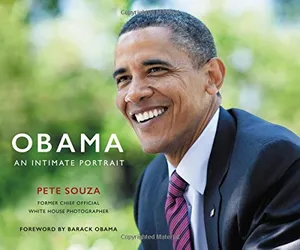

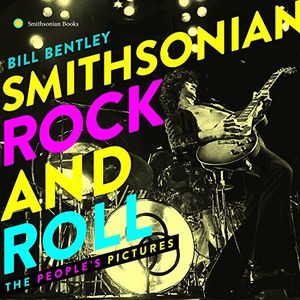

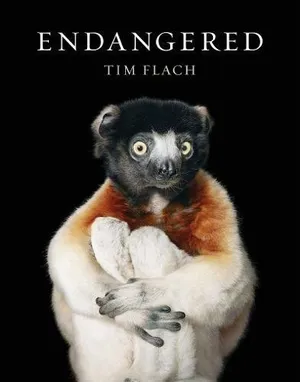
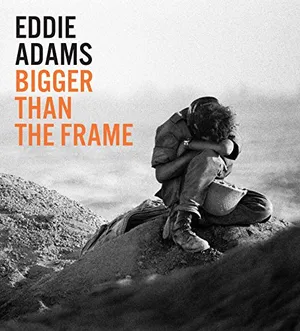
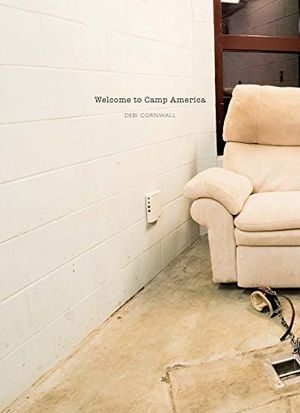
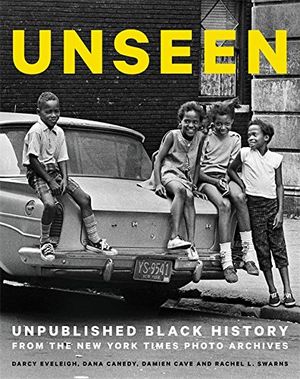
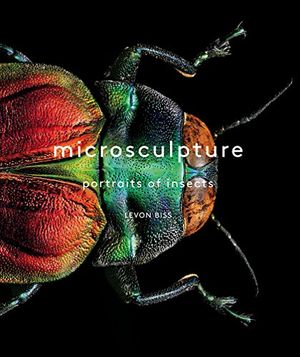
/https://tf-cmsv2-smithsonianmag-media.s3.amazonaws.com/accounts/headshot/DSC_02399_copy.jpg)